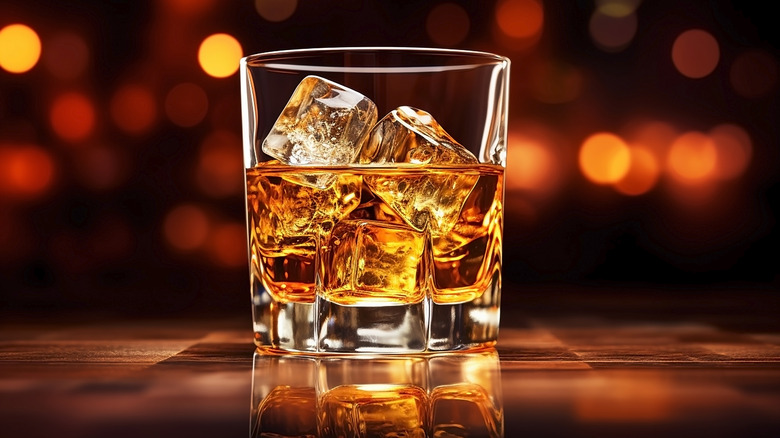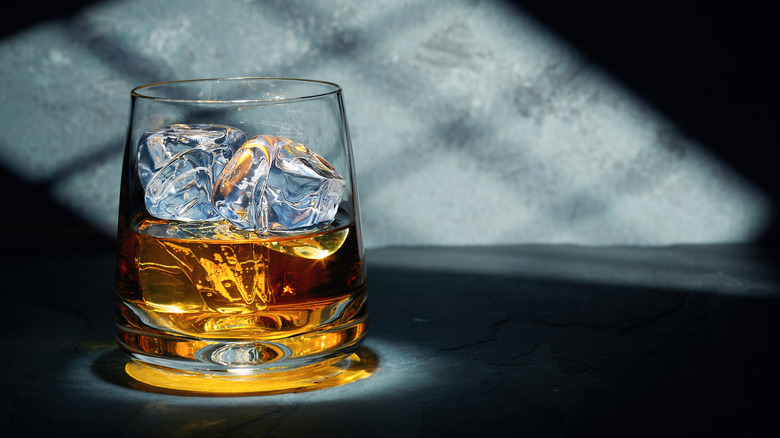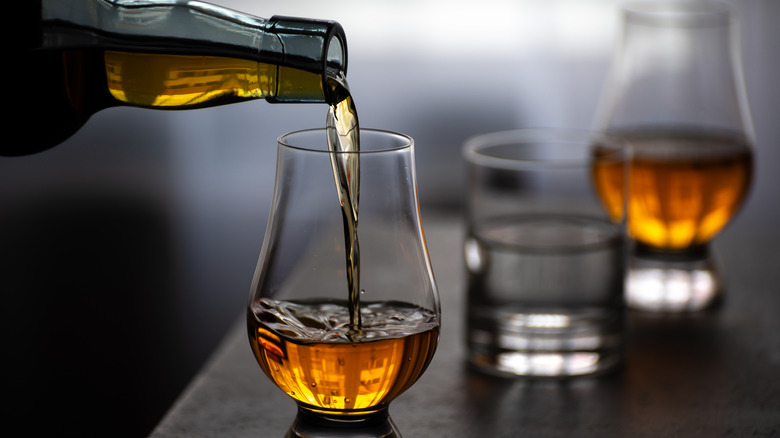How A Bourbon's Water Source Makes All The Difference To Its Taste
While wine connoisseurs discuss terroir when comparing blends, bourbon enthusiasts often speak of water. In the case of bourbon and whiskey-making, geography matters, particularly when it comes to water sources. "Theoretically, the influence of terroir on spirits should be more pronounced than that of wine, as wine is merely the product of grape juice, whereas spirits consist predominantly of water, often drawn directly from the ground," Dr. Craig Wilson writes in his research. Wilson concluded that how water is sourced and where water comes from impacts the sensory profile of your favorite dram.
Considering that a regular bottle of bourbon can be made up of as much as 60% water, this research makes sense. From mash used in production to the amount of water added before booze is bottled, water plays an instrumental role in the mouthfeel and flavor of bourbon. Minerals found in water affect both the fermentation and flavor of spirits. In short, the importance of H2O cannot be overlooked when it comes to the final tasting profiles of whiskies and bourbons.
Strategically choosing water
Distillers must make decisions when deciding where to source water from, as sharper, crisper profiles of bourbon can result from river water, while smoother sips of liquid gold can be derived from mountain springs. Water taken from wells also offers unique benefits for distilleries and can create interesting layers of flavors. Similarly, tap water from local municipalities offers local characteristics that can add complexity. In comparison, water that has been distilled can offer an empty stage for other flavors to step forward. Such variables result in a process that can create a blurry mosaic of science, art, and finesse when it comes to creating a memorable drinking experience.
The state of Kentucky is particularly known for mineral-dense water that has passed through limestone. In Scotland, island waters produce heavier spirits, while lighter, sweeter palates result from springs and lakes found in the country's mountain regions. It might sound counterintuitive, but softer waters with less mineral content generally produce spirits that pack more of an alcoholic wallop, while hard, mineral-dense waters result in lighter, sweeter libations.
Challenges for distilleries
Some distilleries choose to use water from rivers and lakes, while other master blenders prefer to work with water that has been cleaned. Municipal water sources might have less minerals than well or lake water, but they're going to be treated to remove microbes. The challenge for many distilleries is weighing out the costs and benefits of sources. Though it might make sense to use purified water to make any product that will be consumed, the removal of minerals can result in a tasting profile that lacks complexity and depth in a poured dram.
Before spirits are bottled, distilleries dilute or proof beverages with added water to soften heavier alcoholic wallops and create specific tasting notes. Checks and balances must be made when it comes to using pure water sources and wanting specific mineral contents to create a delicious experience. Generally, magnesium lends a sweeter quality to bottles, while calcium can soften and smooth drinks. Too many minerals, however, can negatively impact the mouthfeel and flavor of bourbon. This is why master distillers are truly masters, and we get to appreciate the fruit of their expertise and labor without having to worry about minerals and pH levels.


